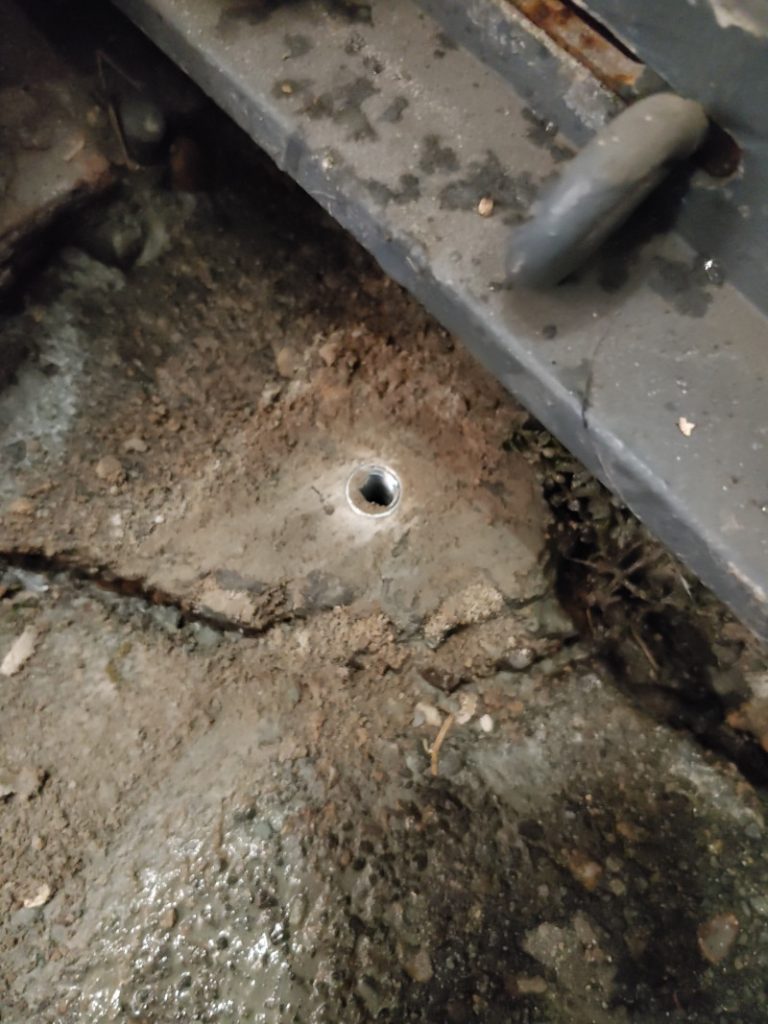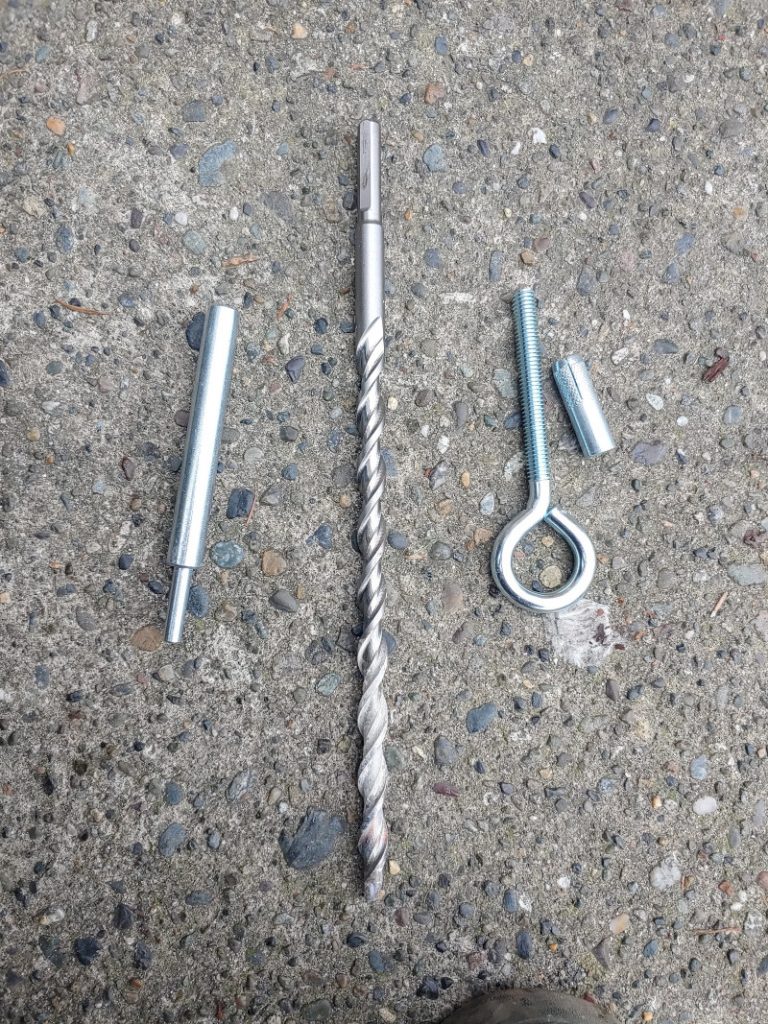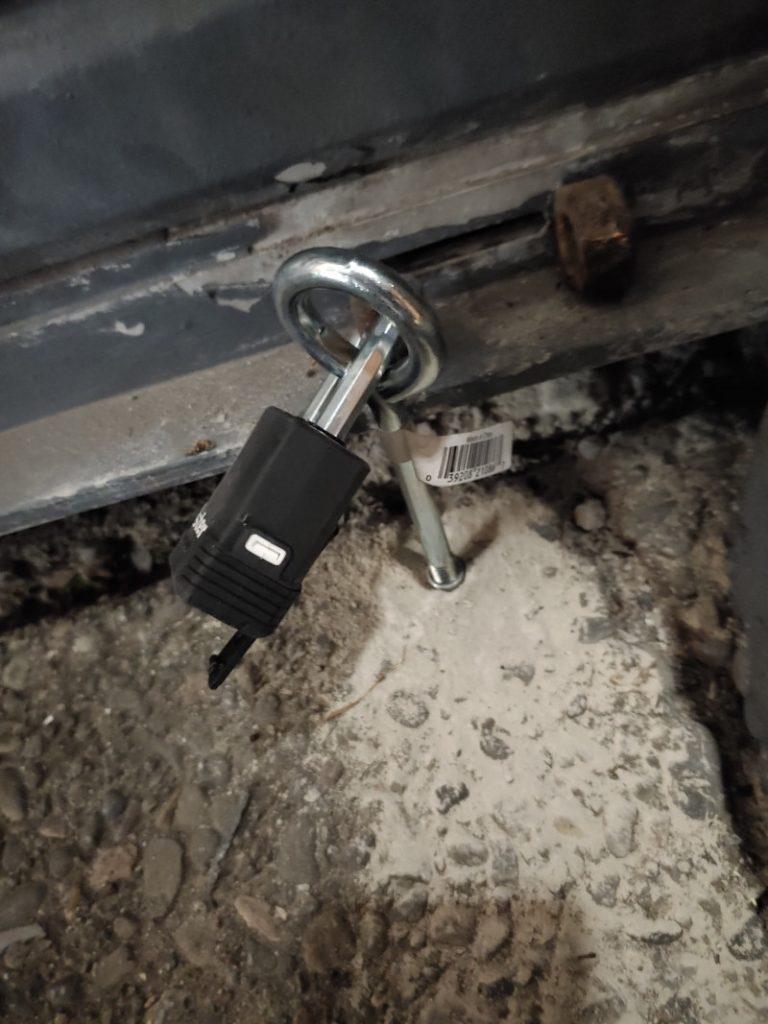Sometimes lift up doors need to be secured but there is no place to attach a lock. I get requests from time to time to install locks on lift up garage doors and if there is not a place to attach a padlock on the inside of the door or there is no secondary entrance one must get creative.
The first thing to consider is if there is already a key override built in to the garage door. This can be determined by simply looking at the outside of the garage door for a keyhole, usually at about the six foot level. If you see one, check if it is attached on the inside by a steel cable to the garage door opener. If it is, I can come out and make a key for it and you can unplug your garage door opener until you can replace it or secure it in some other fashion.
Second option is to install a padlock on the inside of the lift up door if the door is accessible from the inside when locked. There are sometimes slots in garage door tracks for this. If not a hole can be made in the track to prevent the garage door from being lifted.
Some commercial garage doors can actually be lifted up even after they are closed and supposedly secure. Such was the case in the following picture. The best solution I could come up with was to put a bicycle lock through the lift up door and the frame on the side. This prevents the door from being lifted up more than about five inches.
The nice thing about this solution is modifications to the door are minimal, I only had to drill one 1/2″ hole through the hard steel.

The next type of solution is a hasp and padlock. I’ve installed these on garage doors that people didn’t want to fix or didn’t want to replace the electric garage door motor because of great expense. Garage doors are often thin and even hollow core so when you install a hasp on these doors you must take care to through bolt the hasp, meaning you must use some kind of fastener that goes through the door. This is already kind of a hack so perhaps one could be forgiven for screwing into a 2×4 chunk on the other side of the door, but a more elegant solution is to use machine screws and tee nuts. Everything will be flush, secure and looking more proper than a random 2×4 screwed ino your garage door. Abus and American Lock have nice hasps that cover the screws when locked.
Sometimes lift up doors are constructed of very thin metal, like this car wash I was called out to secure last night. This is an interesting problem because a hasp wouldn’t do, it could be torn out of the door. No sensible place for a padlock on the inside of the door either because the space isn’t accessible from the inside by a separate entrance, the doors have to be locked and unlocked from the outside.
The only solution I could come up with to secure these doors was to put concrete anchors in the concrete and put a padlock through the eyehook on the garage door and through one installed into the concrete. There may have been another solution but this was what my Friday night brain seized upon through the mists of fatigue and beer.



In the pictures above you can see some items necessary for this project. First thing needed (not pictured) is a hammer drill. My DeWalt drill/driver has a hammer drill setting which comes in really handy for drilling through concrete and masonry, and not much else. This feature adds $50 onto a drill.
Next you need a concrete bit. I got a long one which was overkill because most concrete is not poured very deeply, so a bit longer than 6″ isn’t necessary. The concrete anchor we will install is only a few inches long, I tried to anchor them as deeply as possible but discovered that the concrete was only four inches thick.
Once you drill the hole in the appropriate spot so that the eye hook you are installing lines up with the eye hook already present on the garage door, you take a special tool for these concrete anchors which is really just a punch but with a shoulder on it and hammer it into the anchor. This expands the bottom of the anchor against the concrete around it.
Now you can screw the eye hook in. If it doesn’t go down far enough, you can cut off some of the threaded part of the eye hook to make it shorter. When a padlock is installed in the eye hook one couldn’t unscrew it, only when you take the padlock out could you remove the eyehook. This is nice because the owner can take the eyehook out when repairs are completed on the garage door, it is not permanent. If we wanted permanence we could dispense with the concrete anchors and dump epoxy resin in the hole and shove the eye hooks into it.
If you did everything correctly, the garage door can’t easily be lifted up. I tried lifting the door I installed two of these eyehooks on and was unable to lift it, but the willpower of a meth addict or a lift up door enthusiast enjoying a Friday night dose of angel dust may be more effective than my efforts. I don’t know the rating of these concrete anchors but I believe they will deter the vagrants who were breaking in to this space.
